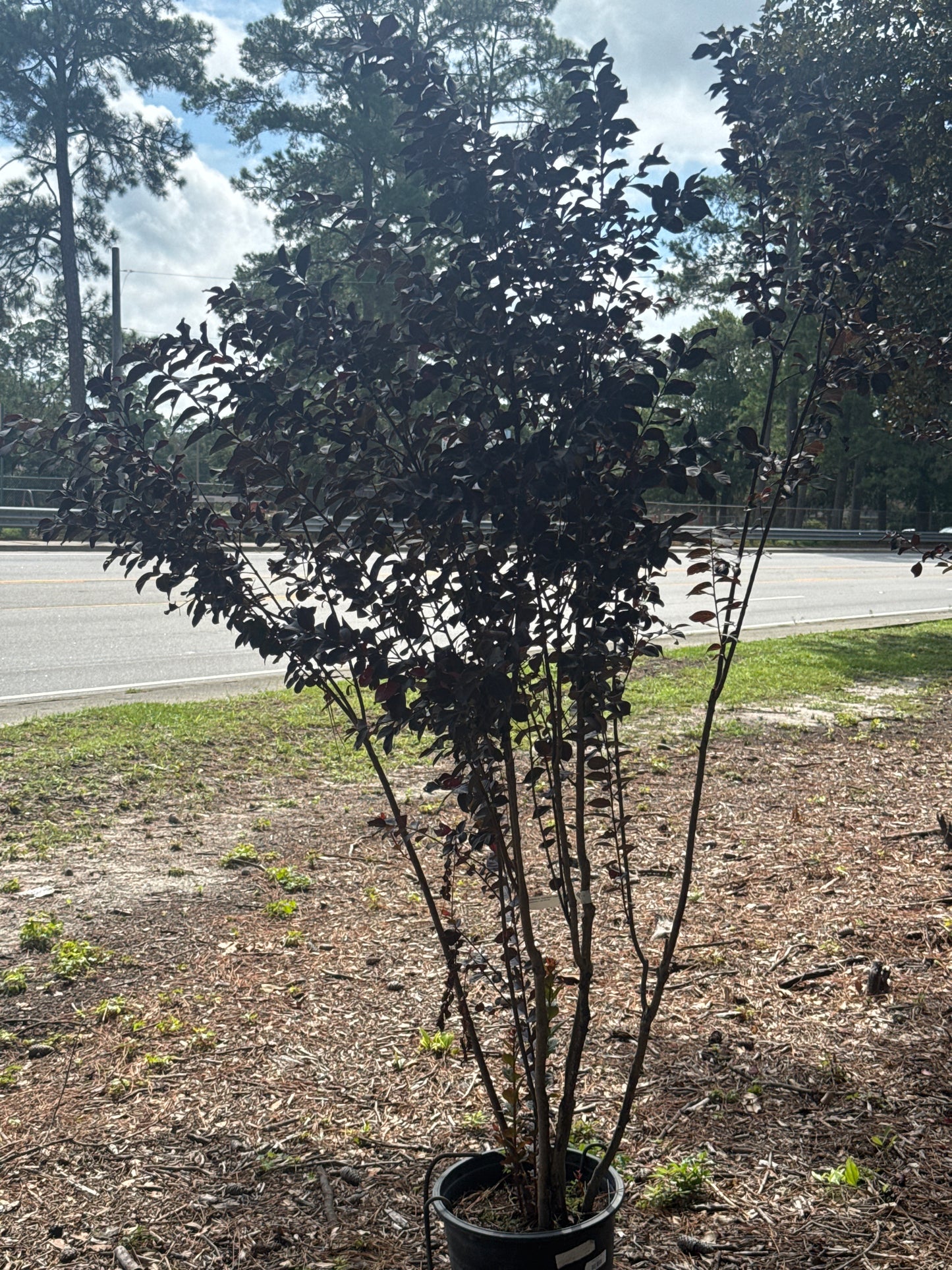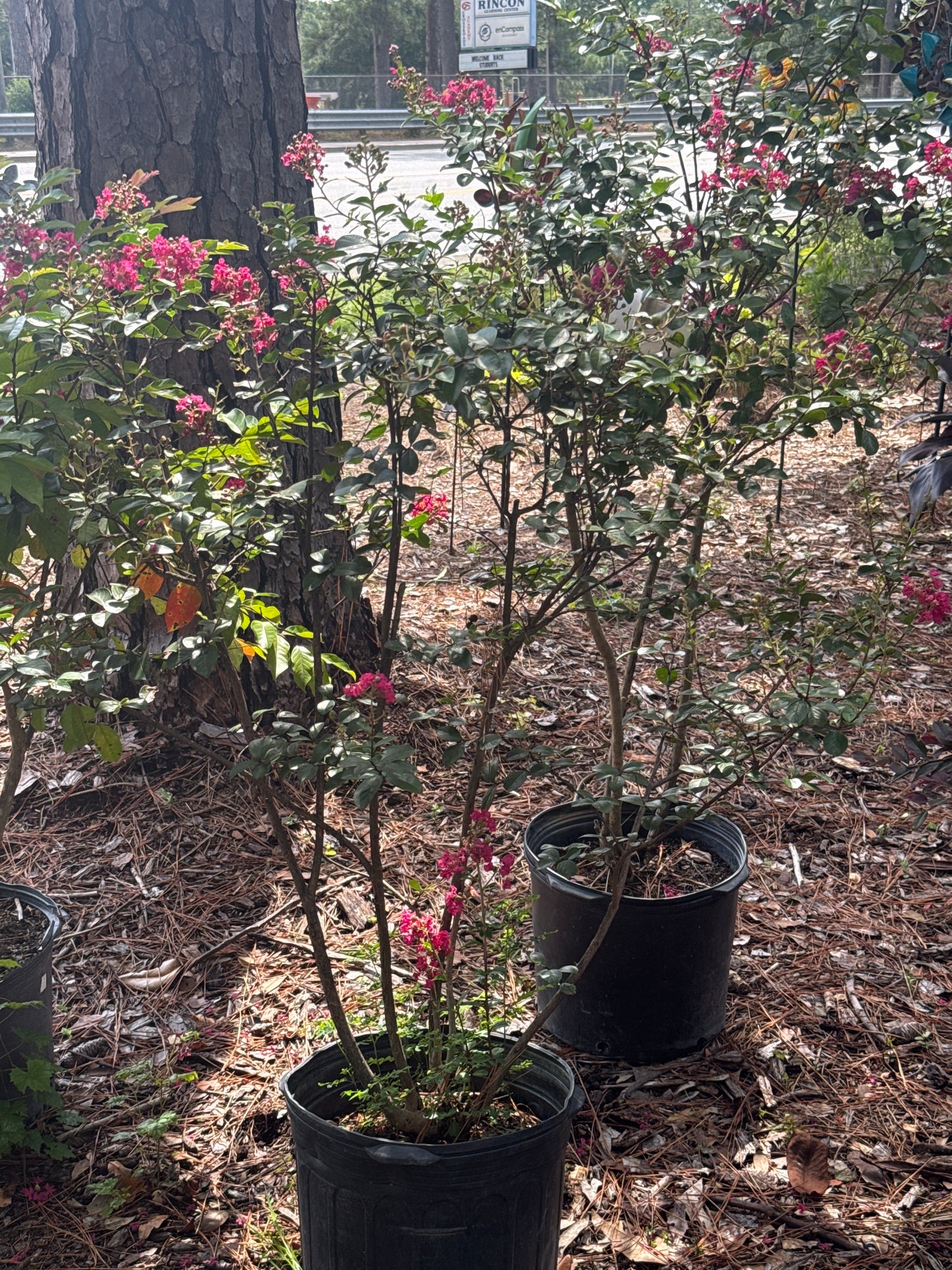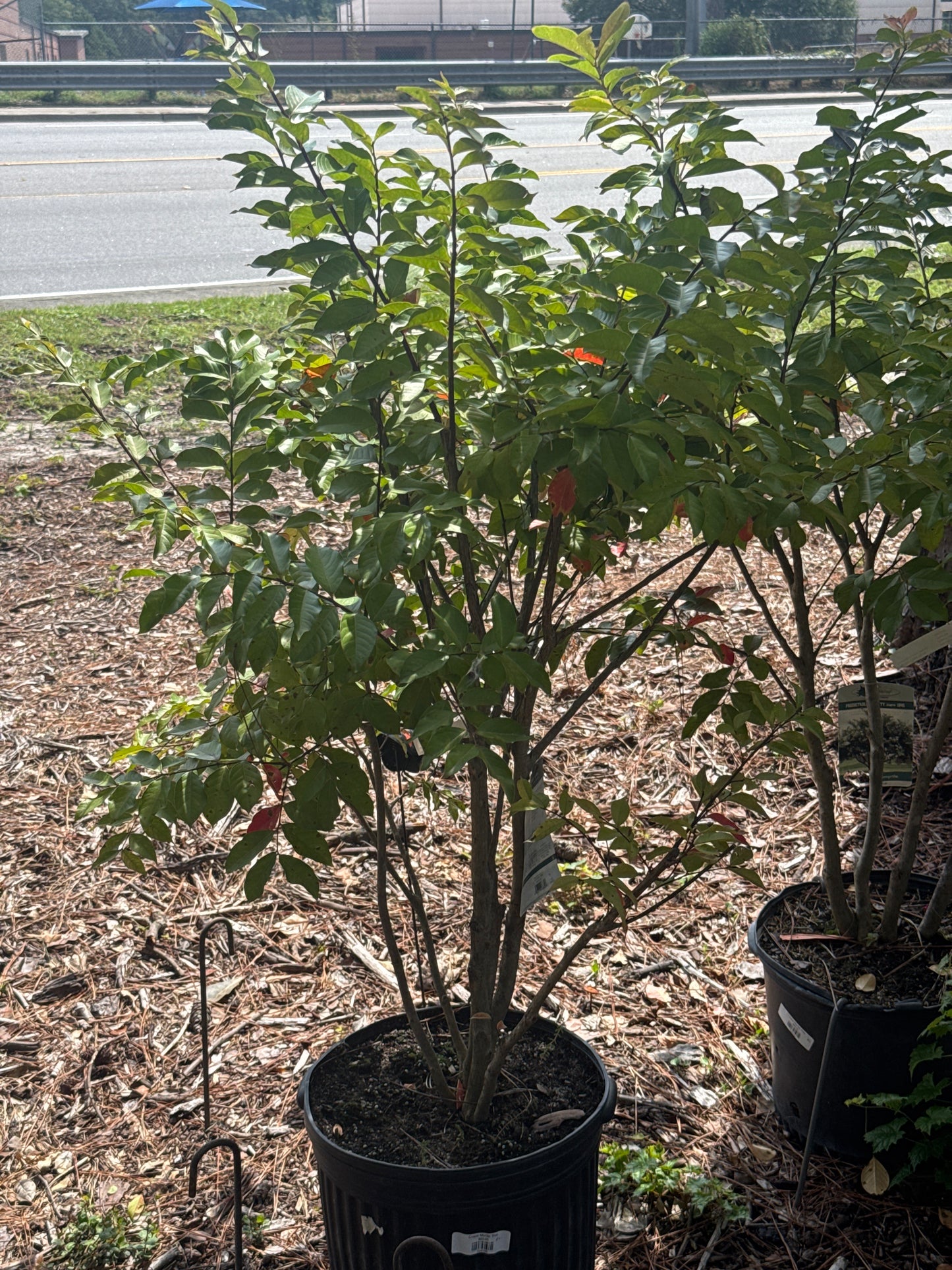Wright's Market
Crape Myrtle Tree
Crape Myrtle Tree
Couldn't load pickup availability
Share
Crape Myrtle Tree – A Southern Staple in Full Bloom
No Southern garden feels quite complete without a crape myrtle in full bloom. With its showy, frilly flowers and smooth, sculptural bark, the Lagerstroemia indica—better known as the crape myrtle—has graced porches, picket fences, and town squares for centuries. First introduced from Asia in the 18th century, this beloved tree has become a symbol of summer in the South, blooming bright when the days are long and the sweet tea is cold.
Where It Grows Best
Crape myrtles thrive in USDA zones 7–10 and love full sun. They do best in well-drained soil and bask in the warmth of long, sunny days. Whether planted as a statement in the front yard or lining a drive like a row of Southern belles, these trees offer lasting charm through every season.
Growth Pattern
Depending on the variety, crape myrtles can grow from compact shrub forms to statuesque trees reaching 15–25 feet tall. They grow upright with a naturally rounded canopy, and their multi-trunk structure adds elegance in every season—even in winter, when the bark peels to reveal smooth, mottled tones beneath.
Care Instructions
-
Light: Full sun (at least 6 hours daily for best blooming)
-
Water: Water regularly during the first year; once established, they’re drought-tolerant
-
Soil: Well-drained, slightly acidic soil
-
Feeding: Fertilize in early spring to encourage strong growth and blooms
-
Pruning: Prune in late winter to shape and remove any crossing branches—avoid heavy cutting ("crape murder") that ruins its natural form
-
Bloom Time: Mid to late summer, with vivid blooms in pink, white, lavender, red, or purple depending on variety
With its blooms like ruffled petticoats and a silhouette that tells stories in the evening light, the crape myrtle is more than a tree—it’s a tradition. The kind that calls back memories of Sunday strolls, summer weddings, and lemonade shared beneath the shade.














